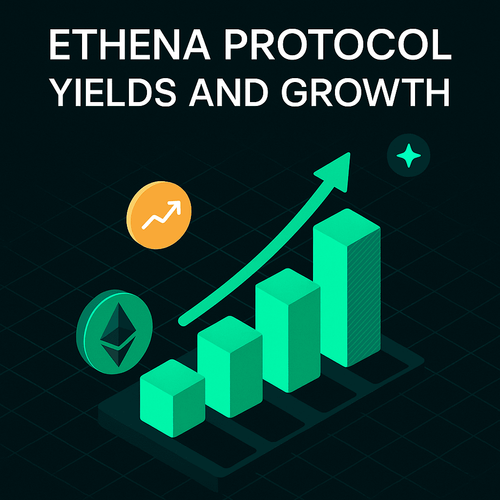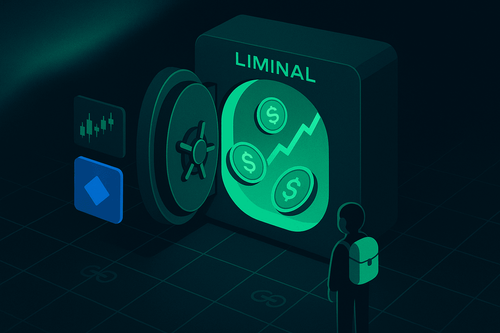Introduction
This note looks at two regulated stablecoins: USDM - a yield-bearing stablecoin regulated in Bermuda, and EURe - a stablecoin from Monerium that is supervised in Iceland with an EMI license.
These stablecoins have been in recent discussions and may have greater relevance going forward given the wave of regulation coming to the cryptocurrency industry.
USDM - Mountain Protocol
USDM is a USD yield-bearing stablecoin regulated in Bermuda. It aims to offer non-US users access to US treasury yields. It is:
- Regulated in Bermuda,
- With rebasing yield generated from US treasuries, and
- Permissionless composability in DeFi
USDM can be created and redeemed by “primary users” - businesses from allowlisted jurisdictions that have passed compliance checks. Primary users can create and redeem USDM with their Mountain Protocol account. US entities are forbidden.
Rebasing Token
USDM is a rebasing token - just like Lido’s stETH. This means that its value will remain at $1, however, the user accrues interest in the form of USDM. So, say if a user has 100 USDM with a yield of 5% APY - after 1 year they will have 105 USDM.
USDM generates yield by purchasing USD T-Bills with a maturity of < 3 months.
This can also include:
- Money markets investing in short-term US treasuries
- Treasury ETFs
- US Treasury collateralized repos
Fully backed
USDM’s reserves are 100% backed and held in custody with 'regulated financial institutions' in ’bankruptcy remote’ accounts that are separate from the protocol’s operating accounts.
The reserves are predominantly short-term treasury and treasury equivalents with bank deposits minimized to reduce counterparty risk.
On the secondary market, the price of USDM is maintained purely by market dynamics; if it is trading below par, the user would need to KYC and become a primary user if they wanted to redeem it for full value (assuming it does not repeg).
Liquidity
Mountain Protocol keep a portion of the reserves outside of USDC - and cash is not maintained in transactional banks. This is with the aim that in the event of a USDC depeg or bank failures, USDM will have sufficient reserves to protect holders. Mountain Protocol provides liquidity through OTC USDC-denominated credit lines collateralized by USDM reserves. This works as follows: advances of USDC go to users which are repaid by USDM reserves when markets open.
Mountain Protocol Platform
The Mountain Protocol Platform is where Primary Users purchase or redeem USDM 1:1 (initially with USDC, then fiat). Users can withdraw their USDM to their allowlisted addresses.
Risks
The key risk to take into account is counterparty risk. This includes:
- Brokers (for treasuries etc)
- Custodians
- Onramp / offramp
- Banks

This is typical of centralized stablecoins; they require trust in various counterparties. This requires strong risk management and counterparty due diligence and monitoring. Various risk mitigations to these counterparties are important - and Mountain has already designed the protocol to reduce these risks. It will be important that this is improved and monitored diligently.
The protocol has the following corporate governance structure to reduce risks:
- Regulated by the Bermuda Monetary Authority
- Requires ‘an external signer’ to sign large transactions and changes in transaction approval policy. The aim of this is to avoid collusion from the board, however, this obviously does not remove this risk.
- USDM reserves are managed by a licensed Investment Manager. Disclosures into who this is would be desirable, and careful monitoring is required.
- Whitelisting of bank accounts where USDM Reserves can be sent to.
These represent various good practices in corporate governance - something that should be demanded from such an offering. Note that they do not remove the risk of bad behavior - but act as a good safeguard against it.
Key Questions
Does it have a compelling value proposition to reach critical mass? Competition at present includes:
- Coinbase is offering 5% on USDC.
- Treasury Bills are yielding around 5.5% at present (risk-free rate).
- It is possible to get ~5% on sDAI on Ethereum.
Perhaps most pertinent is USDC and Coinbase. USDM itself will leverage USDC collateral and use this to generate yield. Circle itself is backed by BlackRock and appears committed to working alongside US regulators to establish itself as the de facto stablecoin. Coinbase (a publicly listed US corporation) also has a strong lindy effect and trust that has been built over the years.
USDM’s key advantage over Coinbase and USDC is composability; it can be used throughout DeFi while accruing yield. Tokenized treasury bills have the potential to become a part of the DeFi stack, and being regulated in Bermuda may enable Mountain Protocol to overcome the regulatory challenges in doing so.
The Dai Savings Rate is another competitor; it introduces additional smart contract risk to activate the DSR.
USDM will need to move past USDC reliance soon (with fiat integration expected) to make it more attractive - and likely would need some institutional partnerships to increase growth. It will require satisfactory DeFi integrations with sufficient liquidity e.g. on Curve to increase organic demand for it for secondary users.
Ultimately, a regulatory-compliant stablecoin that generates yield for its holders is a positive as it increases the optionality for a user to select from. Depending on how developments go with Binance and Tether, as well as institutional adoption, stablecoins like USDM could greatly grow in prominence.
EURe
EURe is a stablecoin issued by Monerium. It has an Electric Money Institution (EMI) license for the European Economic Area and is supervised by the Financial Supervisory Authority of the Central Bank of Iceland. EURe is on Gnosis Chain, Ethereum, and Polygon.
Monerium (and EURe) provide a unique service for KYCd European users. Registered users receive an International Bank Account Number (IBAN) linked to their non-custodial wallet. Users can then:
- Send bank transfers to this IBAN which are automatically converted into EURe on Ethereum, Gnosis, or Polygon, and
- Send their EURe from their crypto wallet to traditional bank accounts - thus offramping from crypto. The EURe is burned and sent as fiat (euro).
This is a unique service that is a positive development for bridging the traditional world with that of web3. Projects such as Gnosis have composed on this with Gnosis Pay which will enable KYCd users to link a debit card with their non-custodial wallet.
EMI Requirements
- Need to be collateralized 103%
- A separate bank is required to custody the funds than the one used by the EMI
- Satisfactory bank partner due diligence
- If required, there should be a feasible plan to wind down operations in an orderly manner without losses to users.
Partnerships and Potential Catalyst
Monerium has partnered with Safe to enable Gnosis Pay - a solution that allows users to link their wallets seamlessly with a Visa debit card. The debit card will be connected to the wallet, thus removing friction points such as the need for using offramps, CEXs, and/or sending to a bank account.
EURe Volume
The cumulative volume for the stablecoin has tripled since July 2023 - from ~$100m to over $300m. While this is a very small fraction of major stablecoins today - it shows greater interest and adoption in the stablecoin.
Key Questions
At present, Monerium’s offering is quite unique, and it offers a powerful value proposition to European users. However, the company remains relatively quiet - and appears to not have ramped up business development and marketing efforts yet. Competing with a behemoth like Circle will always be very challenging, but if Monerium can raise capital and grow, it could establish itself as a strong stablecoin contender in Europe. Its overall supply remains relatively low, but significant room for growth exists.
Regulation is coming for crypto globally - that much is certain. Products that can feasibly exist in this regulatory environment and create real value have promise. Ultimately, the products need to be competitive - not just in crypto but with tradfi. To succeed, new stablecoins will need to generate fundamental recurring demand and create a positive flywheel of confidence and liquidity.




